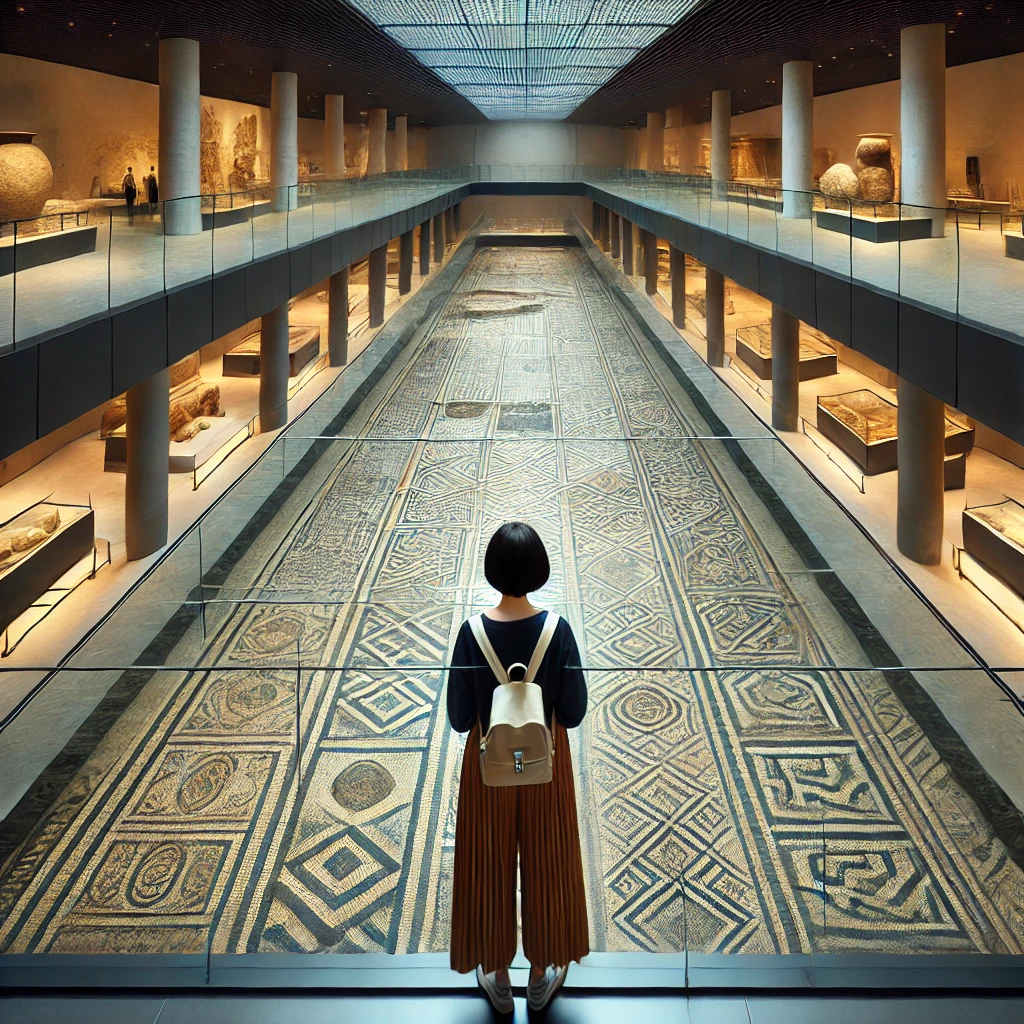ChatGPT:
The Zeugma Mosaic Museum, located in Gaziantep, Turkey, is one of the largest mosaic museums in the world. It is renowned for its rich collection of Roman and late antique mosaics, primarily excavated from the ancient city of Zeugma, a significant settlement during the Roman Empire. Here’s an overview of its origin, history, and cultural significance:
Origin and History
1. Ancient Zeugma:
• The city of Zeugma, meaning “bridge” or “crossing” in Greek, was founded by one of Alexander the Great’s generals, Seleucus I Nicator, in 300 BCE.
• Situated along the Euphrates River, it was a strategic hub connecting East and West through trade and military routes.
• Zeugma flourished under Roman rule, becoming a wealthy city filled with luxurious villas adorned with intricate mosaics.
2. Rediscovery and Excavation:
• In the 20th century, much of Zeugma’s archaeological wealth was discovered during rescue excavations prompted by the construction of the Birecik Dam on the Euphrates.
• To preserve its treasures, many mosaics were removed from their original sites and relocated to the Zeugma Mosaic Museum.
3. Establishment of the Museum:
• The Zeugma Mosaic Museum was opened in 2011 to showcase these artifacts, including mosaics, frescoes, and other relics from the ancient city.
Highlights of the Museum
1. The Gypsy Girl Mosaic:
• The museum’s most iconic piece, the Gypsy Girl, is a fragment of a mosaic believed to represent a Maenad from Dionysian mythology.
• Its haunting eyes and intricate detail make it a masterpiece of Roman mosaic art.
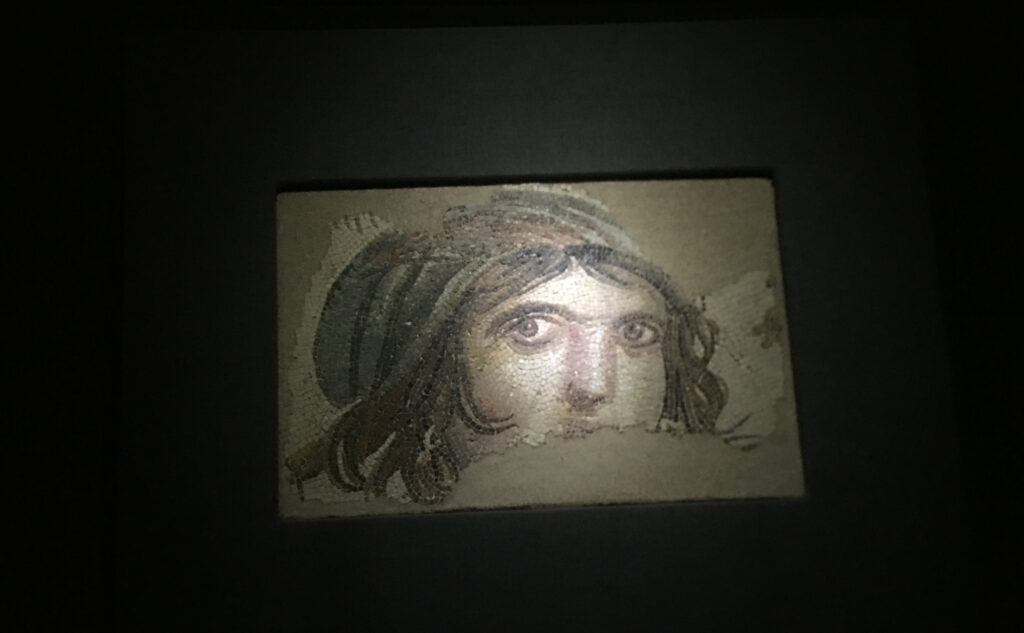
2. Belkıs Mosaics:
• These mosaics, named after the modern name of the area, depict scenes from mythology, daily life, and nature, reflecting the luxurious lifestyle of Zeugma’s elite.
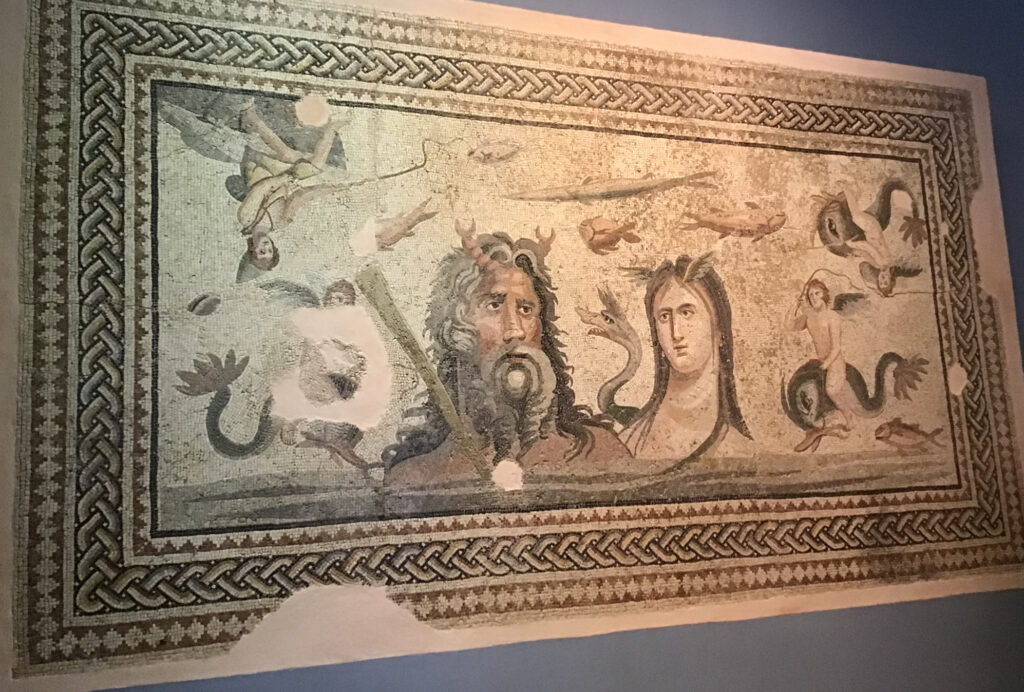
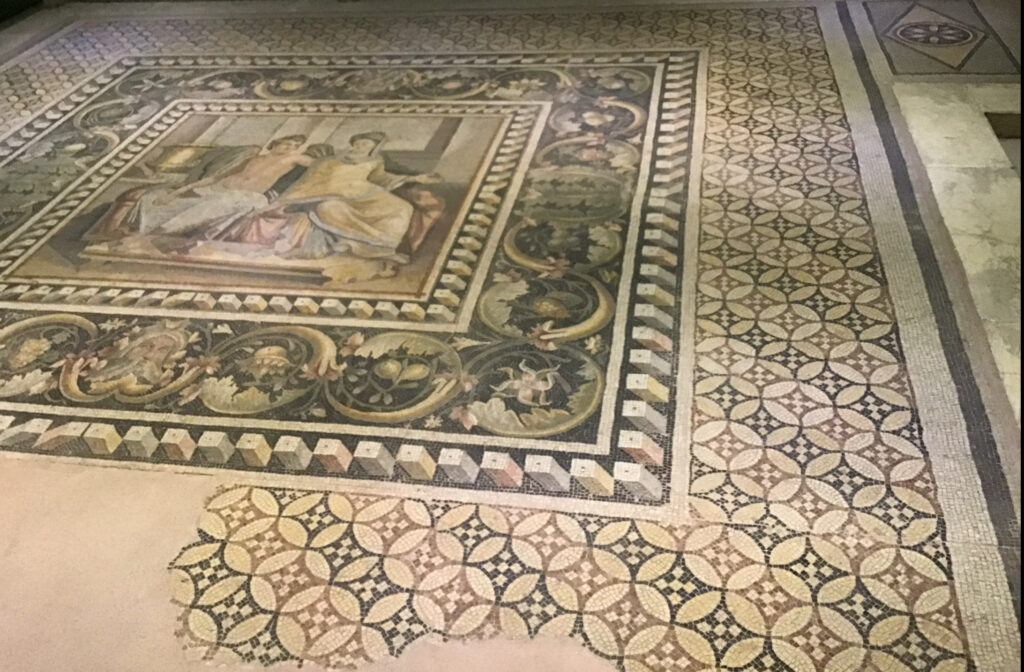
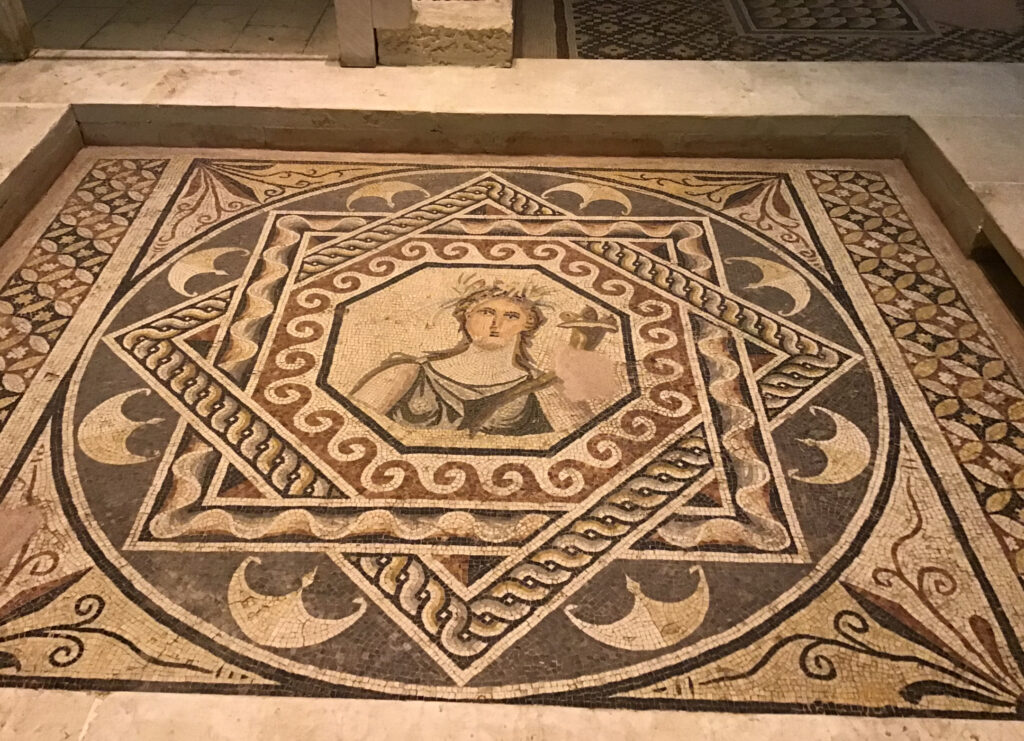
3. Villa Mosaics:
• The museum reconstructs the layouts of Roman villas to display the mosaics in their original context.
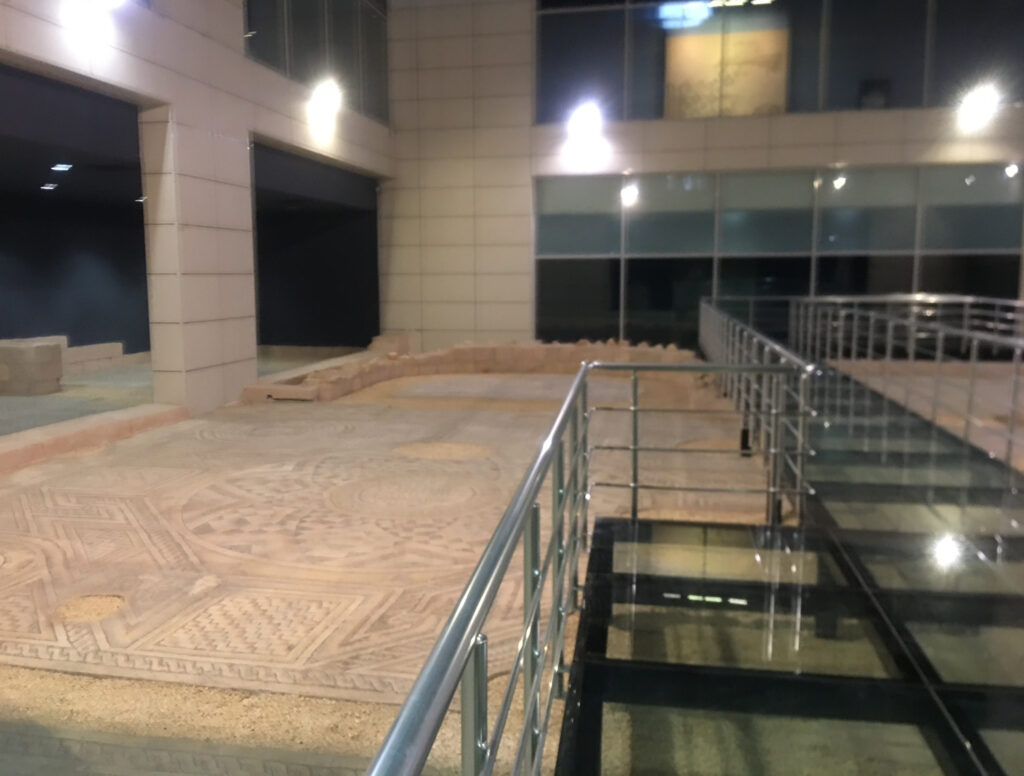
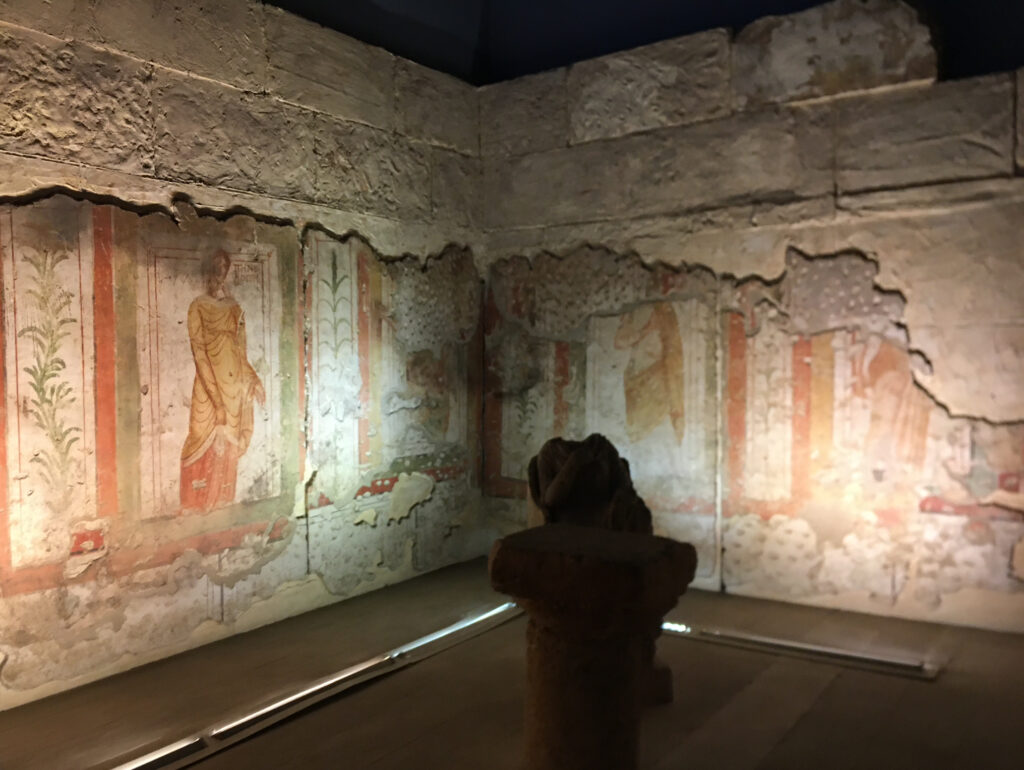
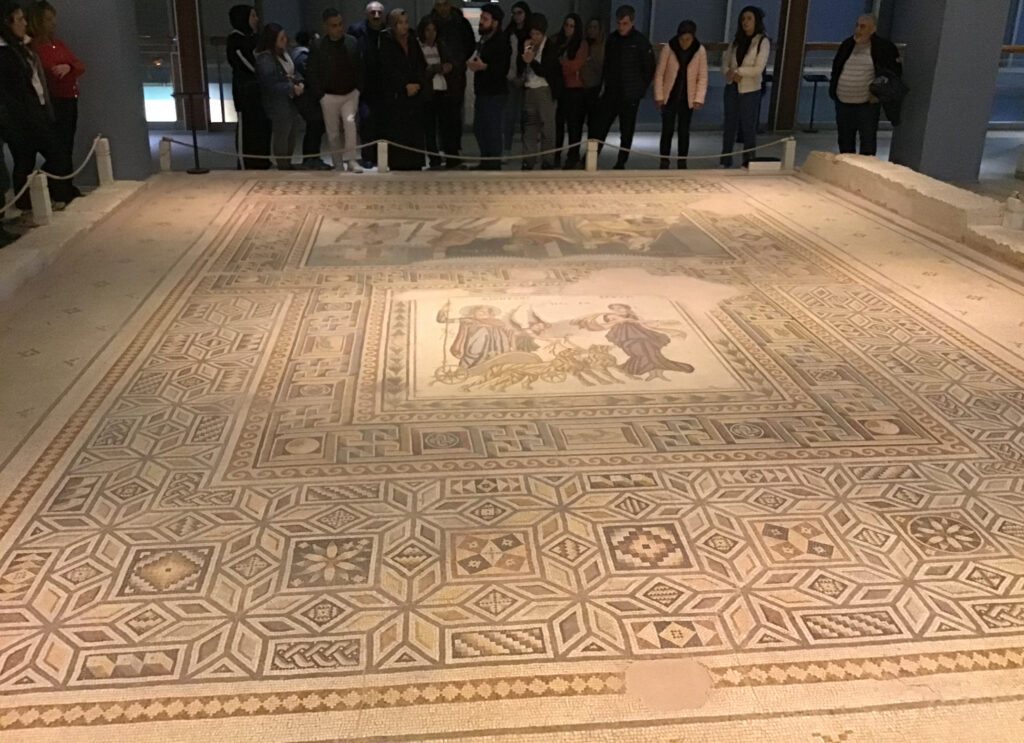
4. Artifacts:
• In addition to mosaics, the museum houses statues, fountains, and artifacts from Zeugma, offering a comprehensive view of its ancient culture.
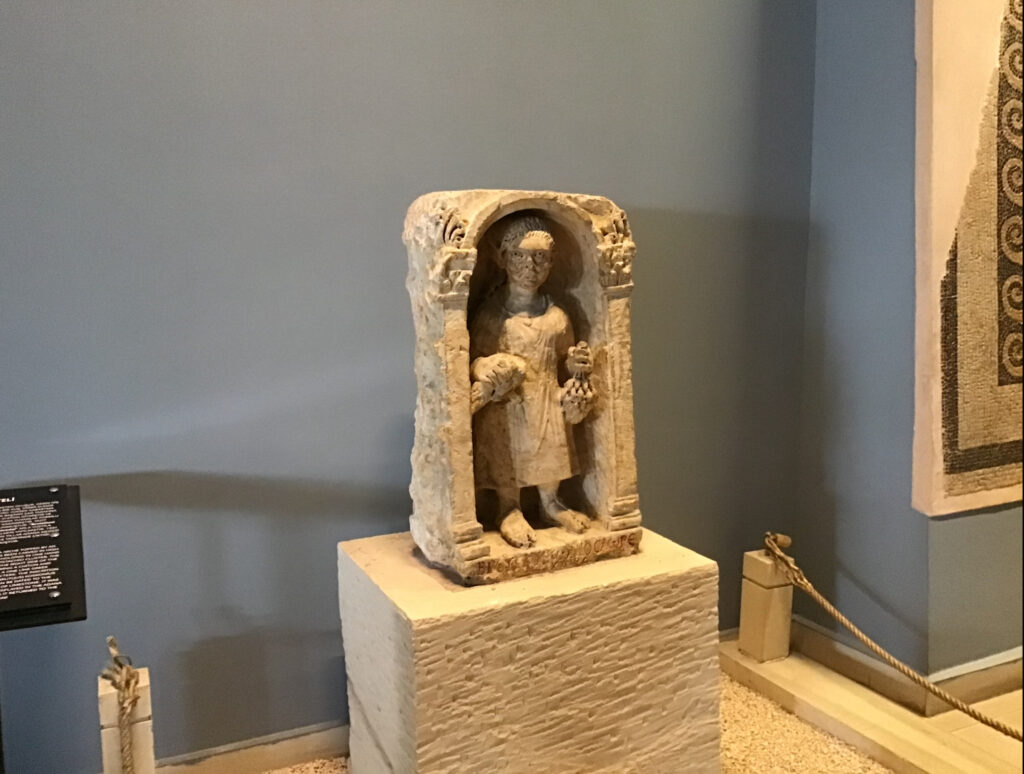
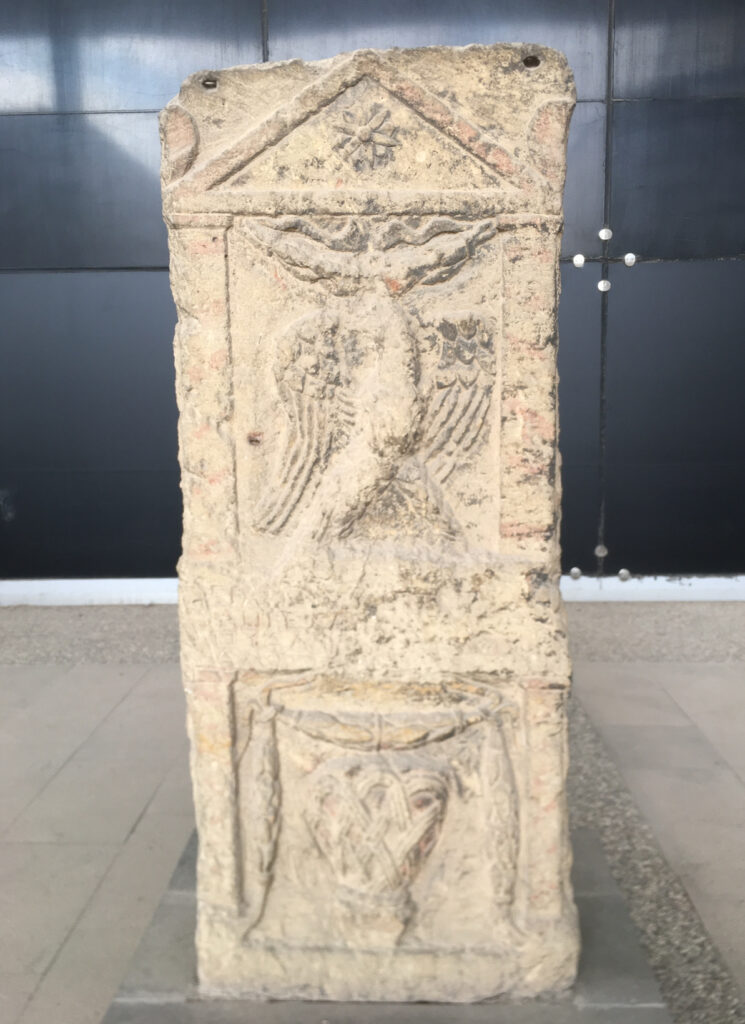
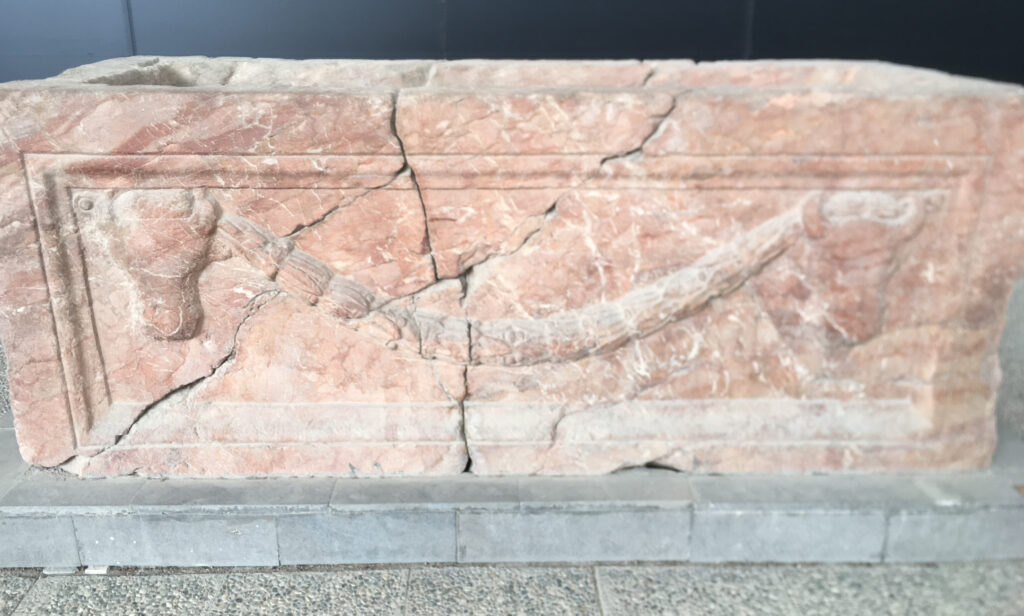
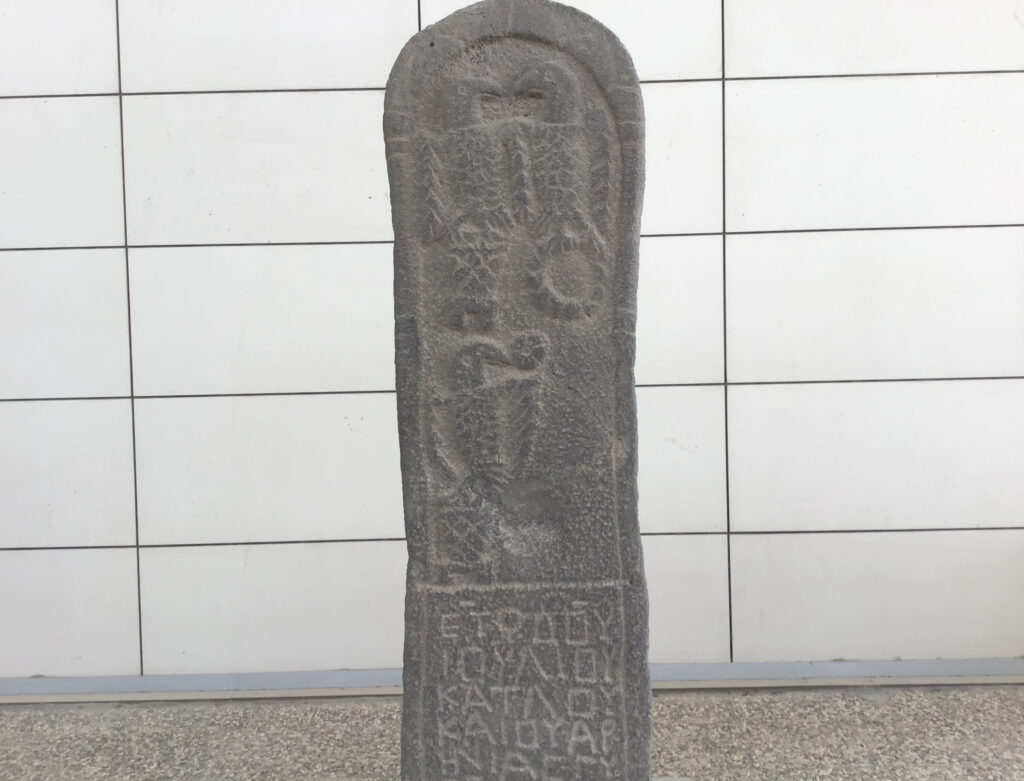
Cultural Significance
1. Preservation of Roman Art:
• The museum preserves the legacy of Roman art and culture, particularly its achievements in mosaic craftsmanship.
2. Historical Insights:
• The mosaics provide a glimpse into the daily life, beliefs, and artistic tastes of the Roman elite in Zeugma.
3. Tourism and Education:
• As a cultural hub, the museum attracts scholars, art enthusiasts, and tourists from around the world, fostering appreciation for ancient art and history.
4. Symbol of Resilience:
• The museum is a testament to the efforts of archaeologists and conservationists to save heritage threatened by modern development.
Global Impact
The Zeugma Mosaic Museum is not just a regional treasure but a global one, showcasing the intersection of Roman, Hellenistic, and Mesopotamian influences. It underscores the cultural exchanges that shaped the ancient world and continues to inspire admiration for the artistic and architectural achievements of antiquity.
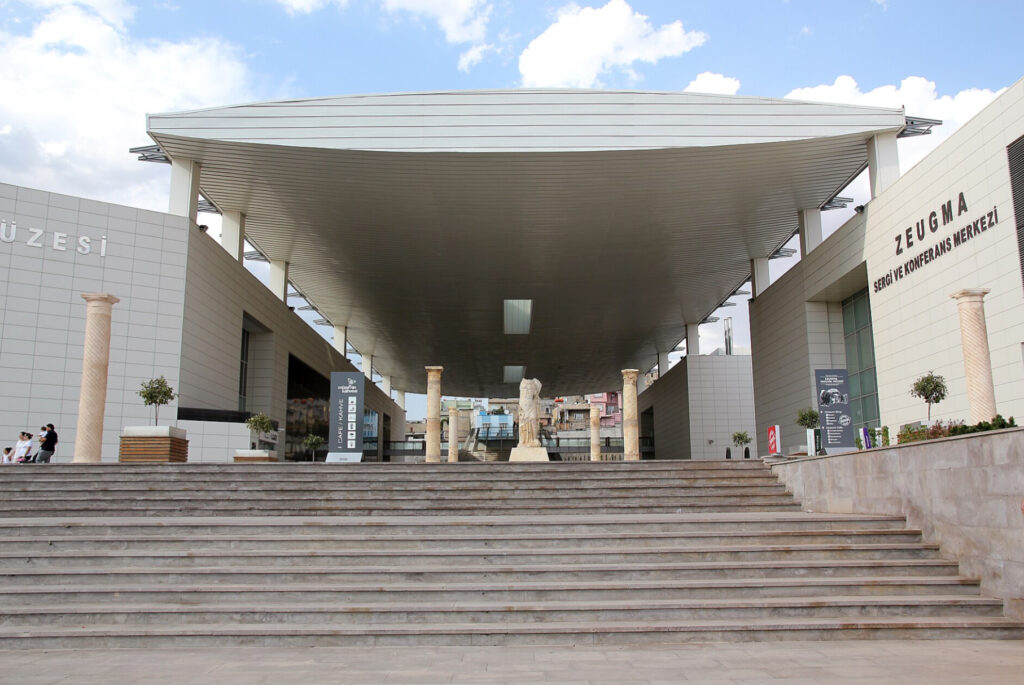
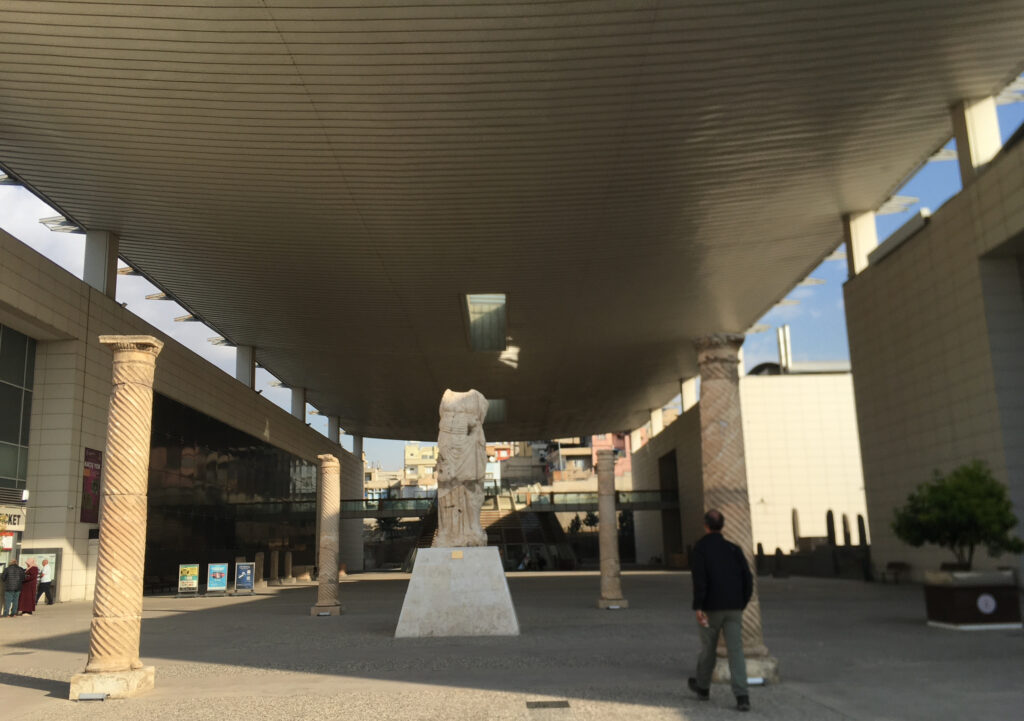
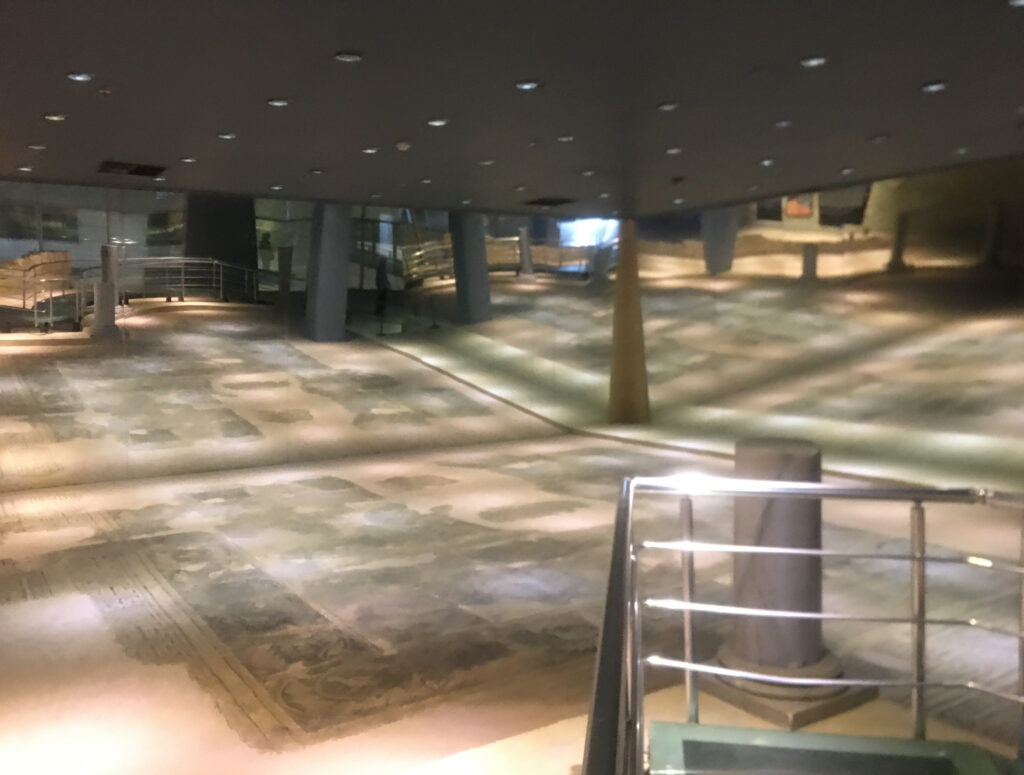
Mosaics in Roman times were more than just decorative art; they served a variety of practical, social, and cultural functions, reflecting the values and lifestyle of Roman society. Here are their main functions:
1. Decoration and Aesthetics
• Enhancing Spaces: Mosaics were used to decorate floors, walls, and ceilings in private homes, public baths, temples, and other buildings, making spaces visually stunning.
• Demonstration of Wealth: The intricate designs, materials (like marble and glass), and labor required made mosaics a sign of wealth and status.
2. Status Symbol
• Affluence and Power: Wealthy Romans commissioned elaborate mosaics to display their financial means, cultural sophistication, and social standing.
• Personalized Designs: Some mosaics featured themes like mythology, hunting scenes, or portraits tailored to reflect the owner’s interests, achievements, or lineage.
3. Storytelling and Communication
• Mythological Narratives: Mosaics often depicted stories from Greek and Roman mythology, reinforcing cultural identity and providing a visual connection to shared beliefs.
• Historical and Everyday Scenes: They could showcase historical events, battles, or everyday activities, serving as a record of Roman life.
• Educational Tool: In some cases, mosaics illustrated complex ideas, making them accessible to a wider audience, including those who were illiterate.
4. Religious and Spiritual Use
• Symbolism: In temples and later Christian churches, mosaics often carried symbolic and religious imagery, serving as an aid for worship and devotion.
• Mythological Deities: Pagan motifs were common, portraying gods and goddesses to reflect the religious beliefs of patrons.
5. Practical Functions
• Durability: Made from stone, glass, and ceramic, mosaics were highly durable and ideal for high-traffic areas like floors in atriums, dining rooms, and public spaces.
• Waterproofing: In bathhouses and fountains, mosaics provided a waterproof, decorative surface.
6. Cultural and Artistic Expression
• Showcasing Artistic Skill: The creation of mosaics required skilled artisans, making them a medium for showcasing innovation and craftsmanship.
• Cultural Exchange: The themes and techniques of Roman mosaics often incorporated influences from Greek, Etruscan, and Eastern cultures, reflecting the empire’s diversity.
7. Political Propaganda
• Imperial Power: Public mosaics in forums or baths could glorify emperors, victories, or the might of Rome, subtly reminding viewers of the state’s authority and stability.
• Public Morals: Some mosaics promoted Roman virtues like loyalty, bravery, and discipline.
Conclusion
Mosaics in Roman times were multifunctional works of art that went beyond decoration. They were tools for storytelling, symbols of wealth, means of cultural expression, and durable, practical solutions for beautifying everyday spaces. Their widespread use underscores their importance in both private and public Roman life, leaving a legacy that continues to fascinate us today.
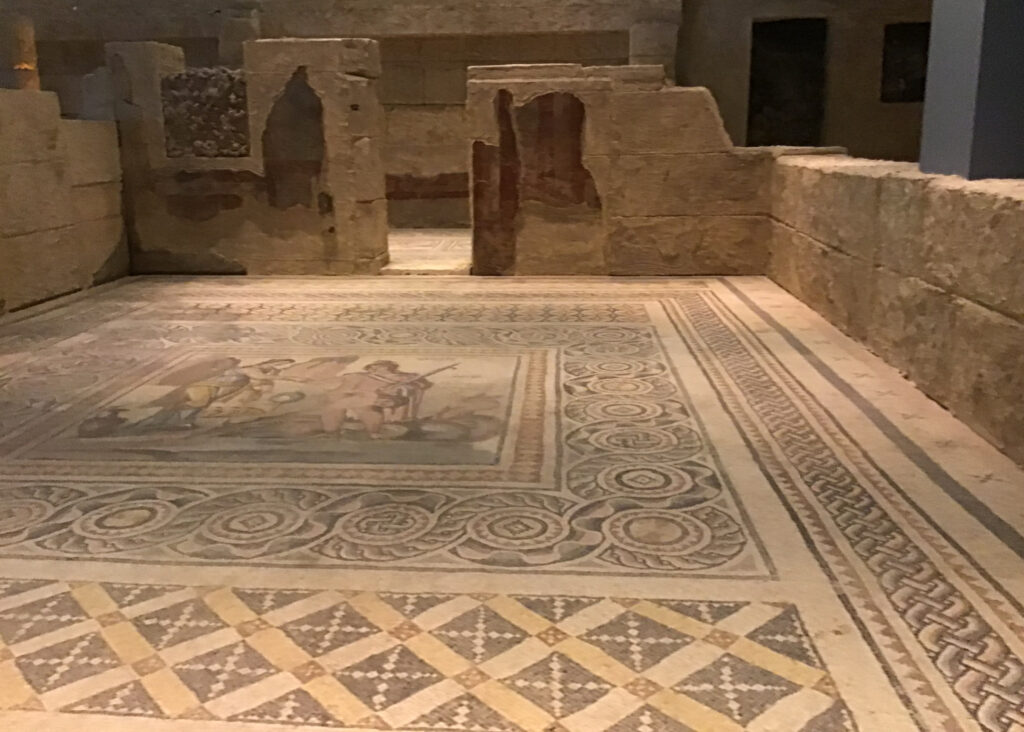
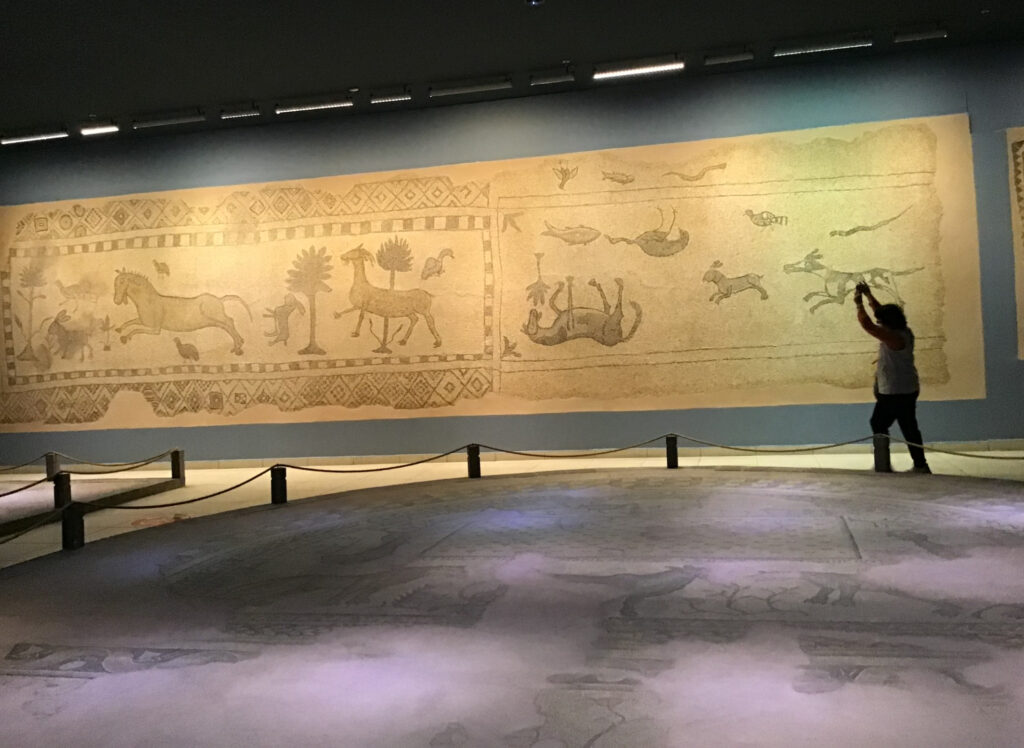
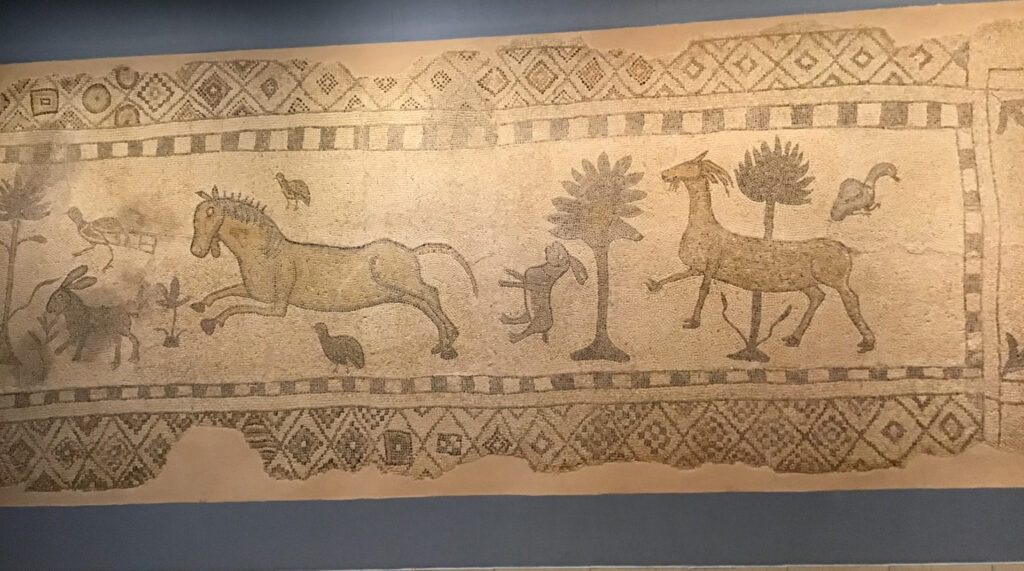



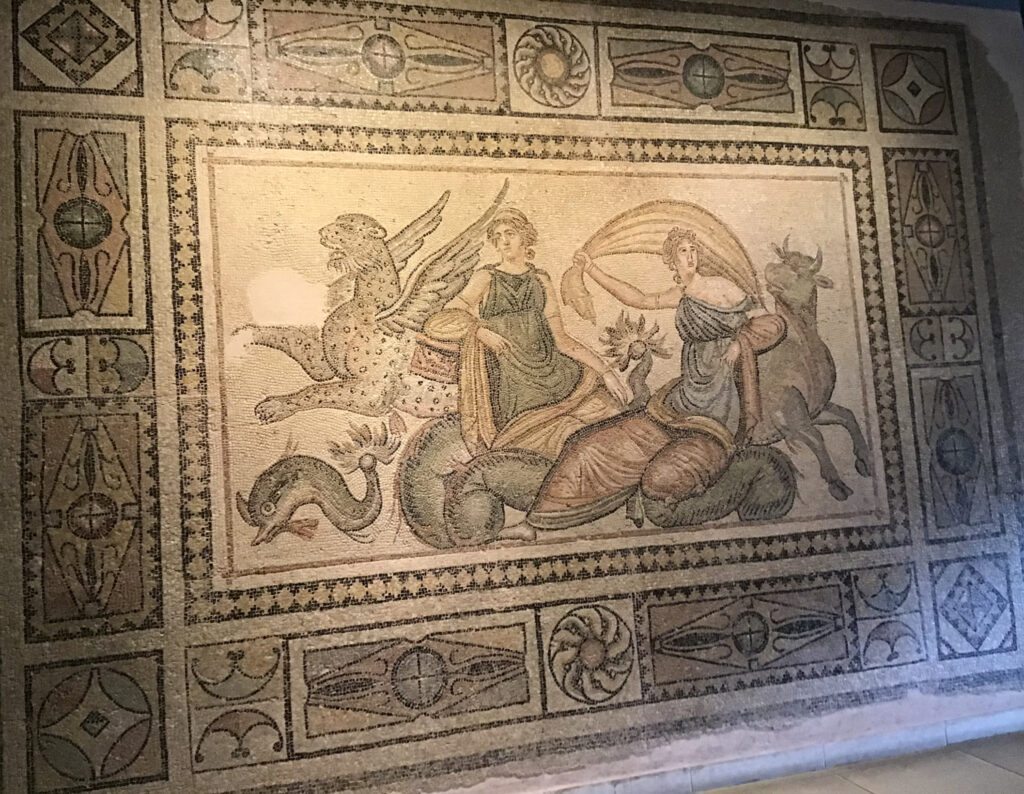
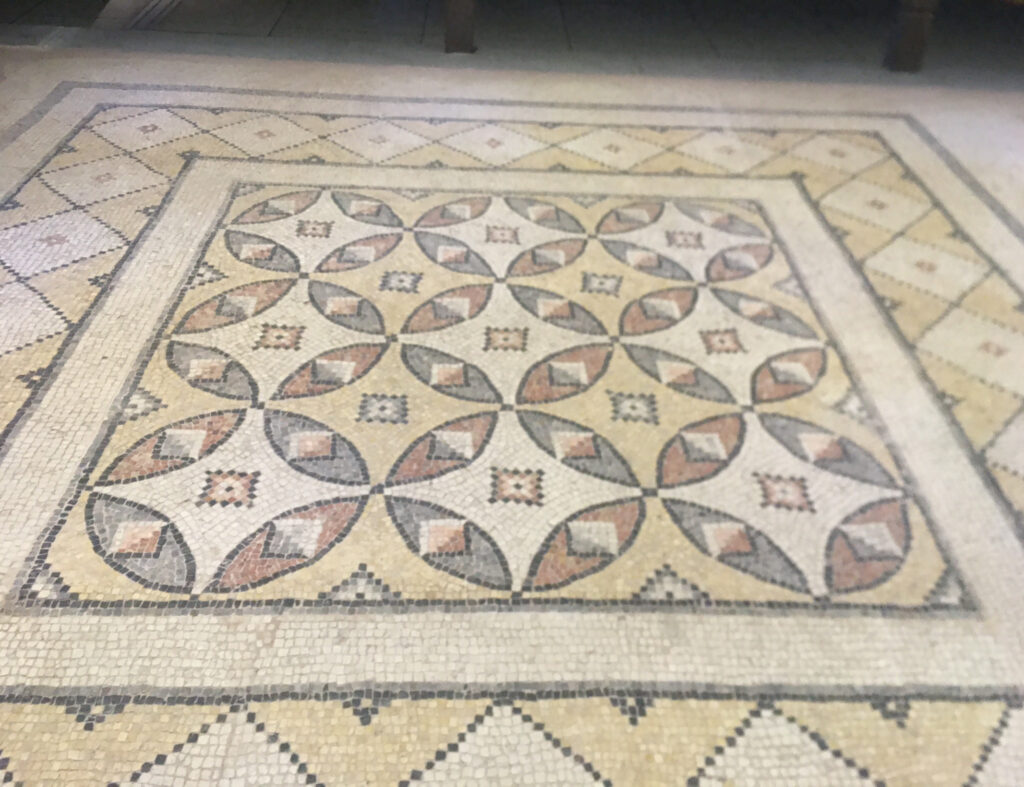
Roman mosaic construction involved meticulous craftsmanship, specialized tools, and a series of well-defined steps. The process varied based on the location, design complexity, and materials used, but the following methods highlight the key stages of mosaic creation during Roman times:
1. Design and Planning
• Blueprint Creation: Artists (called mosaicists) began by sketching the design on paper or directly on the surface to be decorated.
• Theme Selection: The choice of subject—mythological, geometric, or naturalistic—depended on the patron’s preferences and the mosaic’s intended function.
• Grid Layout: Complex designs were often planned using a grid to ensure accuracy and proportion.
2. Preparation of the Surface
• Foundation Layers: The mosaic was laid over a multi-layered foundation to ensure durability:
1. Statumen: A rough layer of stones, often large pebbles, for stability.
2. Rudus: A thick layer of coarse mortar mixed with rubble.
3. Nucleus: A finer layer of mortar, leveled to create a smooth surface.
4. Fine Mortar Layer: A thin, smooth top layer of lime or plaster where the tesserae (mosaic pieces) were embedded.
3. Tesserae Preparation
• Materials: Tesserae were small, square pieces made from materials like:
• Stone (marble, limestone).
• Glass (for vibrant colors, especially in later Roman mosaics).
• Ceramic tiles.
• Shells or precious stones for special effects.
• Cutting: Tesserae were cut by hand using hammers and chisels to achieve uniform sizes. Smaller tesserae allowed for finer detail.
4. Placement of Tesserae
• Direct Method:
• Tesserae were placed directly onto the prepared surface, pressing them into the wet mortar or plaster.
• Artists often worked in small sections to prevent the mortar from drying too quickly.
• Detailed designs (like faces or intricate patterns) required precise placement and coordination of colors.
• Indirect Method:
• For large-scale or complex designs, tesserae were first arranged upside-down on a temporary surface (like cloth or paper) coated with adhesive.
• Once complete, the mosaic was transferred to the final location and pressed into the mortar bed.
5. Grouting and Finishing
• Grouting: After the tesserae were set, gaps between them were filled with grout (a mixture of lime and fine sand) to secure the pieces.
• Polishing: The surface was cleaned and polished to enhance the colors and smoothness of the mosaic.
• Sealing: In some cases, a sealant was applied to protect the mosaic from wear or moisture.
6. Tools Used
• Hammer and Chisel: For cutting tesserae into precise shapes.
• Trowels and Spatulas: To spread mortar evenly.
• Compasses and Rulers: For creating geometric patterns.
• Brushes and Sponges: To clean and polish the finished mosaic.
Regional and Temporal Variations
• Opus Tessellatum: Used larger tesserae for floor mosaics, focusing on bold, geometric patterns.
• Opus Vermiculatum: Employed smaller tesserae for detailed, pictorial mosaics, often used in wall art or central panels (emblema).
• Opus Sectile: Instead of small tesserae, larger, cut stones or tiles were used to create intricate patterns or images.
Durability and Legacy
The Roman mosaic construction process resulted in highly durable works of art, many of which survive today. Their methods showcase the Roman commitment to artistry, engineering, and cultural expression, influencing mosaic-making techniques for centuries.
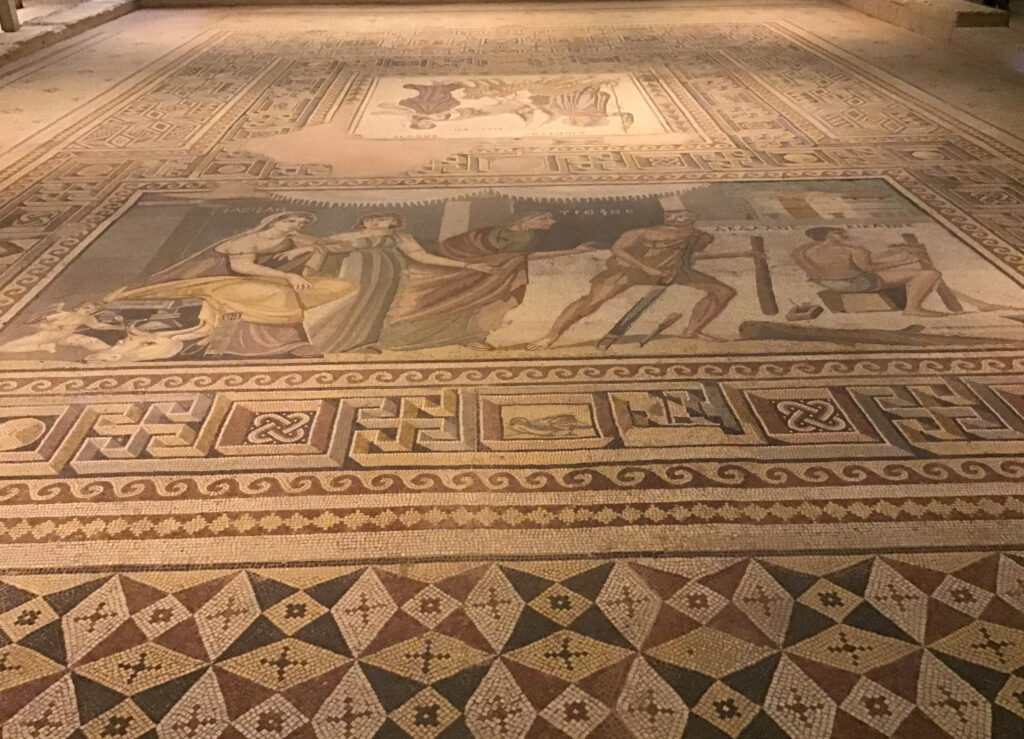
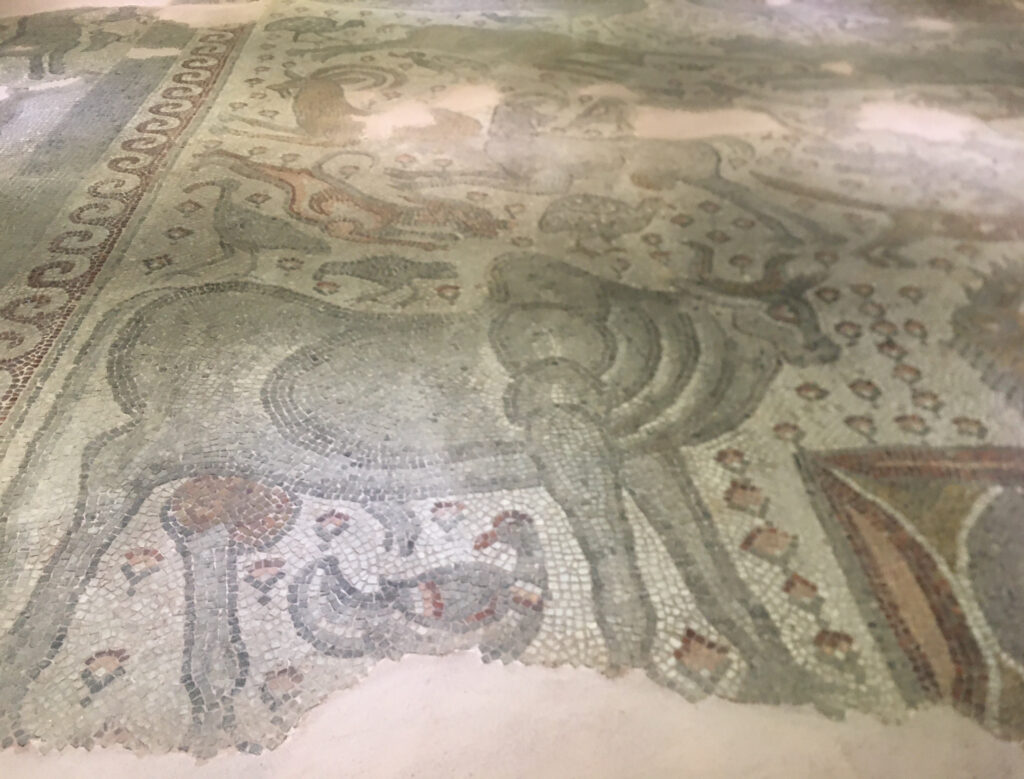
Here is a list of other major mosaic museums around the world, known for their extensive and significant collections:
1. Bardo National Museum (Musée National du Bardo) – Tunis, Tunisia
• Highlights: Houses one of the largest collections of Roman mosaics in the world, showcasing works from ancient Carthage and other Roman-era cities in North Africa.
• Notable Pieces: The Virgil Mosaic, depicting the poet Virgil flanked by the Muses of tragedy and history.
2. Villa Romana del Casale – Piazza Armerina, Sicily, Italy
• Highlights: A UNESCO World Heritage site, it features some of the most well-preserved Roman mosaics, covering nearly 3,500 square meters.
• Notable Pieces: The Bikini Girls mosaic and the Great Hunt, depicting exotic animals being captured.
3. Istanbul Archaeology Museums (Kariye Museum / Chora Church) – Istanbul, Turkey
• Highlights: Famous for its Byzantine mosaics, particularly those depicting Christian religious themes.
• Notable Pieces: The Deesis Mosaic and scenes from the life of Christ and the Virgin Mary.
4. Madaba Archaeological Park – Madaba, Jordan
• Highlights: Known as the “City of Mosaics,” Madaba boasts a large collection of Byzantine and Umayyad mosaics.
• Notable Pieces: The Madaba Map, a 6th-century mosaic map of the Holy Land, including Jerusalem.
5. Ravenna Mosaics – Ravenna, Italy
• Highlights: Ravenna, a UNESCO World Heritage site, is renowned for its Byzantine mosaics in churches and mausoleums.
• Notable Pieces: The mosaics in the Basilica of San Vitale and the Mausoleum of Galla Placidia.
6. Antioch Mosaic Museum – Antakya (Hatay), Turkey
• Highlights: Features an impressive collection of Roman mosaics from ancient Antioch and its surroundings.
• Notable Pieces: Mosaics depicting mythological figures, hunting scenes, and everyday life.
7. Museum of Roman Civilization (Museo della Civiltà Romana) – Rome, Italy
• Highlights: Features Roman mosaics alongside other artifacts showcasing the life and culture of ancient Rome.
• Notable Pieces: Reconstructed mosaics from Roman villas.
8. Archaeological Museum of Naples (Museo Archeologico Nazionale di Napoli) – Naples, Italy
• Highlights: Displays mosaics from Pompeii, Herculaneum, and other nearby Roman towns destroyed by Mount Vesuvius.
• Notable Pieces: The Alexander Mosaic, depicting Alexander the Great’s battle with Darius III.
9. Paphos Mosaics – Paphos, Cyprus
• Highlights: Located in the Kato Paphos Archaeological Park (a UNESCO site), the mosaics are among the best-preserved in the Mediterranean.
• Notable Pieces: Mythological scenes, such as The Four Seasons and The Birth of Dionysus.
10. Byzantine and Christian Museum – Athens, Greece
• Highlights: Features a large collection of Byzantine mosaics, icons, and artifacts from Greece and neighboring regions.
• Notable Pieces: Religious mosaics depicting Christ and the Virgin Mary.
11. Museum of Fine Arts – Lyon, France
• Highlights: Houses a notable collection of Roman mosaics, including those from the nearby ancient Roman city of Lugdunum (modern Lyon).
• Notable Pieces: Mythological and geometric mosaics.
12. Getty Villa Museum – Malibu, California, USA
• Highlights: Features mosaics collected from the Roman Empire, including North Africa and Italy.
• Notable Pieces: The Lion Hunt Mosaic and mosaics depicting oceanic deities.
These museums showcase the artistic, cultural, and historical significance of mosaics, with collections ranging from the Roman Empire to the Byzantine and early Islamic periods. Each offers unique insights into ancient craftsmanship and design.
